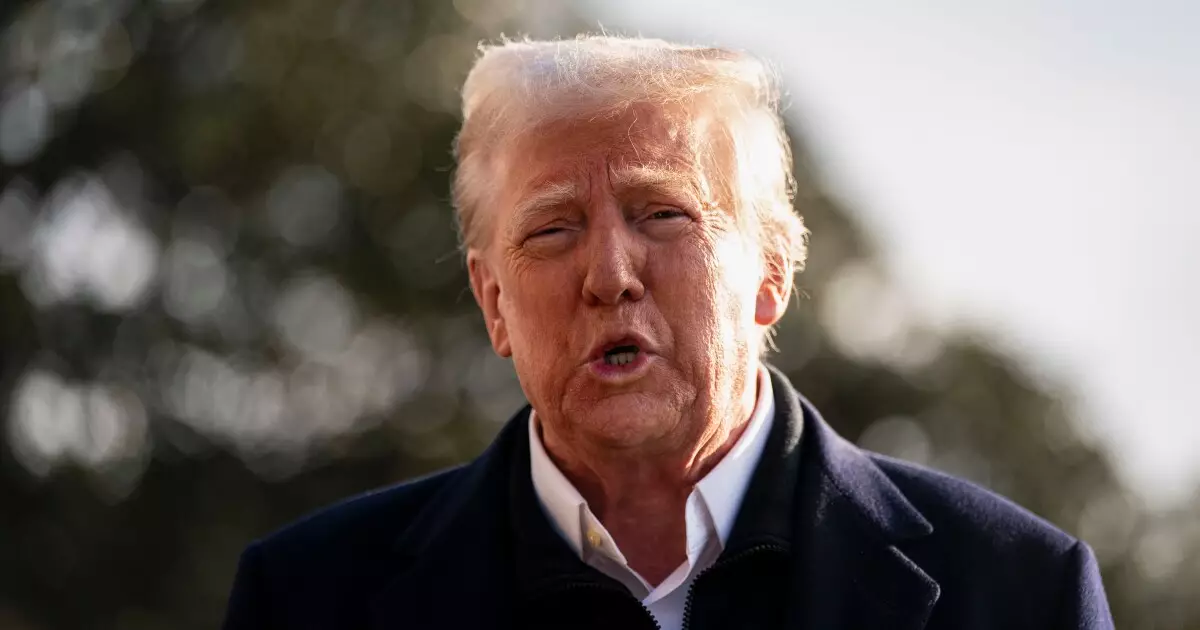The recent controversy surrounding the White House’s memo to pause federal grants and loans has stirred confusion among various stakeholders. This article aims to dissect the announcement’s nuances, its implications for state and local governments, and the broader political ramifications it may invoke.
On a seemingly routine Tuesday, the White House found itself embroiled in a storm of confusion sparked by a two-page memo from the Office of Management and Budget (OMB). This memo directed federal agencies to halt all federal financial assistance activities, ostensibly to conduct a thorough review of existing programs and policies. This pause raised alarm bells across the country, particularly among associations representing local governments, such as the National League of Cities and the American Association of State Highway and Transportation Officials. The potential freeze on financial assistance was perceived as a stark interruption in a system that many states rely upon for essential services.
The immediate reverberations prompted organizations like the Council of Development Finance Agencies to advise their members to draw down any available federal funding ahead of a disbursement deadline. The memo’s unsettling tone indicated a level of uncertainty that local governments had not encountered before, magnifying concerns regarding the continuity of services that rely heavily on federal grants.
Amid the uproar, the White House scrambled to provide clarification. Officials promptly communicated that only grants and loans opposing President Donald Trump’s executive orders would be paused. These executive orders spanned topics of significant public interest, including clean energy, immigration policies, and social equity measures. Key programs deemed essential—like Medicaid, food assistance programs, and federal student loans—were explicitly exempted from the freeze, alluding to a controlled strategy rather than a blanket cessation of assistance.
Press Secretary Karoline Leavitt, during her inaugural press conference, had the difficult task of addressing the contentious fallout. “The reason for this is to ensure that every penny that’s going out the door is not conflicting with the executive orders and actions the president has taken,” she explained. However, the lack of clarity in the memo’s initial terms and the ambiguity surrounding which programs would be affected stirred unrest and skepticism.
The temporization of federal funds comes in the wake of renowned presidential actions that tend to produce a backlash. Philip Rocco, a political science professor, articulated this phenomenon, noting that the chaos of the memo’s rollout was reminiscent of similar changes during Trump’s first term. Historically, such actions seem without precedent in their potential disruption of extensive federal programs simultaneously.
In contrast to established protocols like the Impoundment Control Act of 1974, which provides a legal framework for withholding funds, the swift and chaotic nature of this situation has thrust the administration into an unpredictable legal battle almost immediately. Civil society organizations wasted no time in pushing back—filing a motion for a temporary restraining order, indicating an urgent demand for judicial intervention to protect vital funding streams.
The pending legal challenges signify a growing discontent. States including New York, California, and Illinois have united in a lawsuit against the federal government to contest this funding pause, emphasizing that communities stand to face adverse effects from the memo’s unanticipated consequences. Senator Chuck Schumer highlighted the gravity of the situation, urging a reconsideration of how funding can influence day-to-day governance in multiple states, particularly those that rely heavily on federal funds.
The National Council of Nonprofits, echoing similar sentiments, articulated deep concerns about the impact on organizations that depend on governmental assistance for operational survival. The freeze on Notices of Funding Opportunities has further stalled the progress of economic development programs, sowing discord amid communities anxiously awaiting support for crucial initiatives.
With the federal government doling out approximately $1 trillion in grants in the previous fiscal year—representing over one-third of states’ total revenue—the implications of this funding freeze could be far-reaching. This funding supports critical public services, including healthcare, education, and infrastructure. It’s crucial for local leaders, nonprofits, and community stakeholders to galvanize their voices against potential interruptions. The current situation highlights the delicate balance between national policy directives and local community needs.
The memorandum from the White House not only represents a logistical hurdle for federal funding but also uncovers underlying tensions between state and federal governments. As stakeholders grapple with the immediate consequences of this political maneuver, the importance of transparency and communication remains paramount, ensuring that essential services are safeguarded against political turbulence.


Leave a Reply